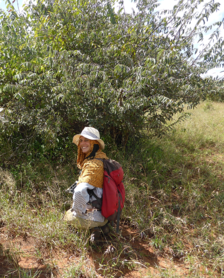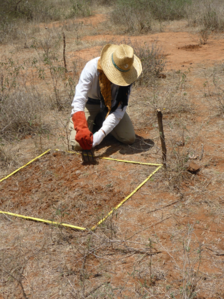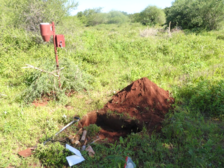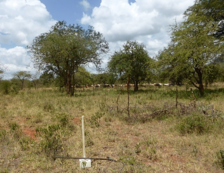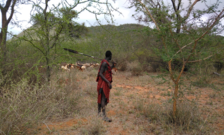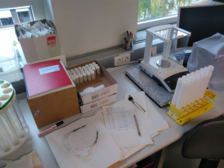How resilient are semi-arid rangelands towards high grazing pressure and rainfall variability? Water and nutrient availability under different grazing regimes in Eastern Africa
Sabine Baumgartner
University of Hohenheim,Stuttgart
Institute of Agricultural Sciences in the Tropics (Hans- Ruthenberg Institute)
Nelson Mandela- African Institution for Science and Technology, Arusha, Tanzania
Supervisor: PD Dr. Anna Treydte, Prof. Dr. Folkard Asch, Dr. Joachim Ingwersen
Challenges
Semi-arid African savannas are prone to heavy degradation due to overutilization by people and livestock and increased climate variability. However, the large majority of pastoralists heavily depend on a functional rangeland ecosystem for livelihood. Transhumance, traditionally practiced by the Maasai ethnic group in eastern Africa, has been an efficient grazing management system for decades to cope with unfavorable and unpredictable climatic events and to sustain rangeland quality. However, its implementation is increasingly constricted by political factors and increasing areas of cropping land and conservation areas that lead to increased fragmentation and thus, high grazing pressure on the remaining grazing land. Changing precipitation pattern might additionally hamper the resilience of the Maasai rangelands. Deferred grazing systems (Alalili), traditionally implemented by the Maasai pastoralists, set aside parts of the land as calf pasture and forage reserve during the dry season. Combined with seasonal resting periods for the surrounding open rangelands these might be suitable management tools to combat negative impacts of overutilization and climate change.
Objectives
The objective of our research project is to evaluate the resilience of rangelands in northern Tanzania towards high grazing pressure and rainfall variability. We will focus on the provision of those rangeland ecosystem services that are relevant for livestock grazing, such as rangeland productivity and forage quality. We want to find out whether Alalili and seasonal resting periods are a suitable management tools to sustain an overall high-quality rangeland condition in our study area.
Expected results
- Gain knowledge on regrowth rates under different grazing intensities and rangeland management strategies.
- Learn about the impact of grazing on nutrient availability, the vegetation composition and forage quality.
- Evaluate the rainwater use efficiency under different grazing regimes
- Predict the rangeland condition under different rainfall- and livestock scenarios
Aims
This study will enable us to draw conclusions on the condition of the Maasai rangelands and its ability to provide ecosystem services that Maasai pastoralists depend on for livelihood. We will to predict the rangeland condition under different climate- (e.g. IPCC scenarios) and livestock scenarios and assess the potential of different grazing regimes to increase the resilience of the rangelands under changing rainfall pattern. From the gained results we aim to predict risks and chances of the Maasai rangeland management.
Methods
Field investigation: The study will be conducted in the Maasai steppe of northern Tanzania, a semi-arid savanna landscape receiving bi-modal rainfall of around 600 mm per annum. Four Alalili were compared to four sites in “Dry-Season”- grazing land and four sites in “Rainy-season”- grazing land.
On our sample sites we assessed the following parameter:
- Grass species composition and abundance
- Nutrient content of a high- value forage grass species
- Soil nutrient content
- Biomass regrowth rates under different cutting frequencies
- Rainwater use efficiency
Prediction of long-term development: The collected data will be analysed statistically and compiled into a model to evaluate different rainfall- and livestock scenarios and its impact on the Maasai rangelands.
Peer reviewed publication:
1. Treydte AC, Baumgartner S, Heitkönig IM, Grant CC, Getz WM, 2013. Herbaceous forage and selection patterns by ungulates across varying herbivore assemblages in a South African Savanna. PLoS ONE 8:e82831.
2. Baumgartner SA, Treydte AC, Grant CC, van Rooyen J, 2015. Can diverse herbivore communities increase landscape heterogeneity? Comparing wild and domestic herbivore assemblages in a South African savanna. Perspect. Plant Ecol. Evol. Syst. 17:34–43.
3. Thellmann K, Cotter M, Baumgartner S, Treydte A, Cadisch G, Asch F , 2018. Tipping Points in the Supply of Ecosystem Services of a Mountainous Watershed in Southeast Asia. Sustainability 10:2418.

